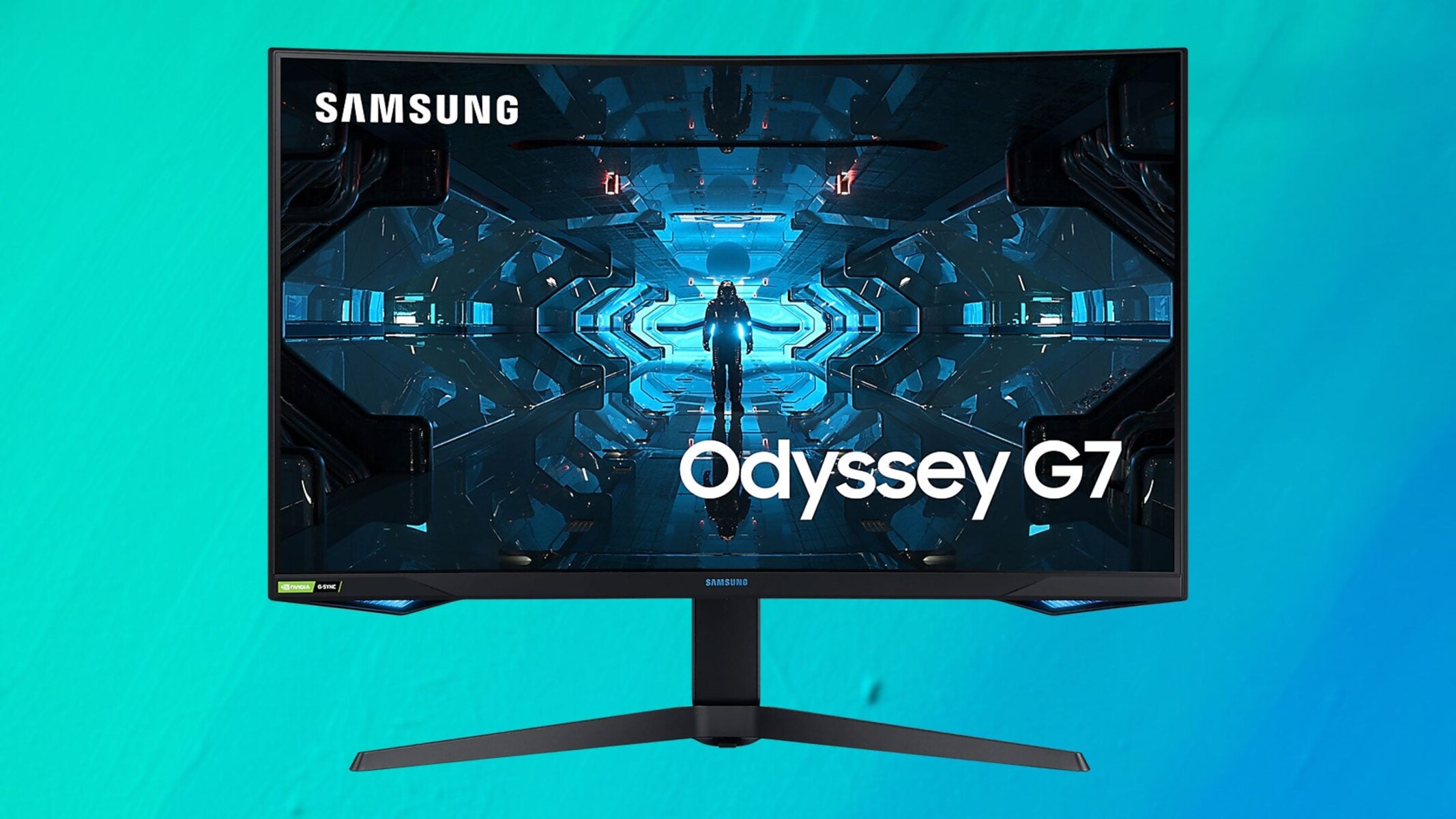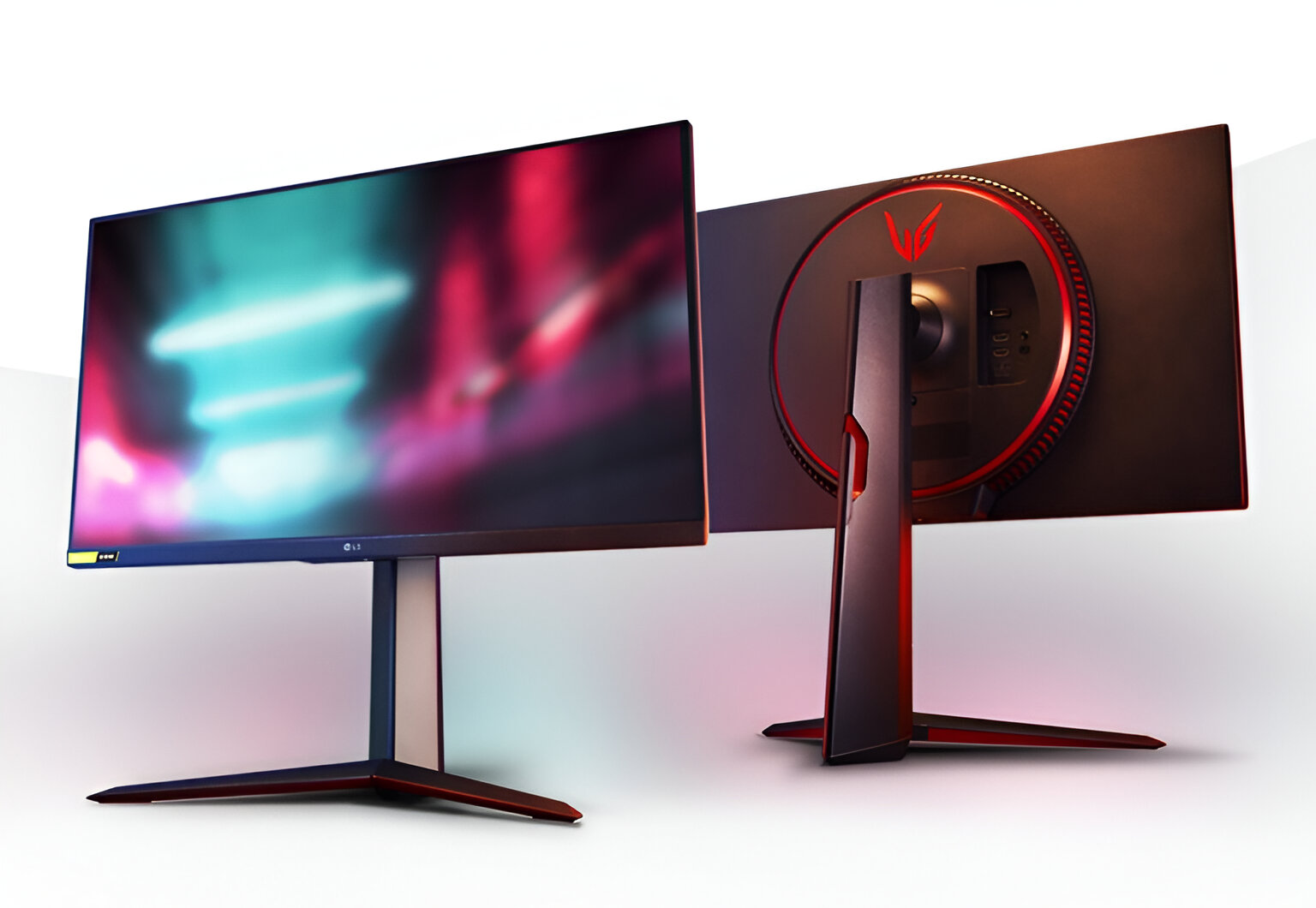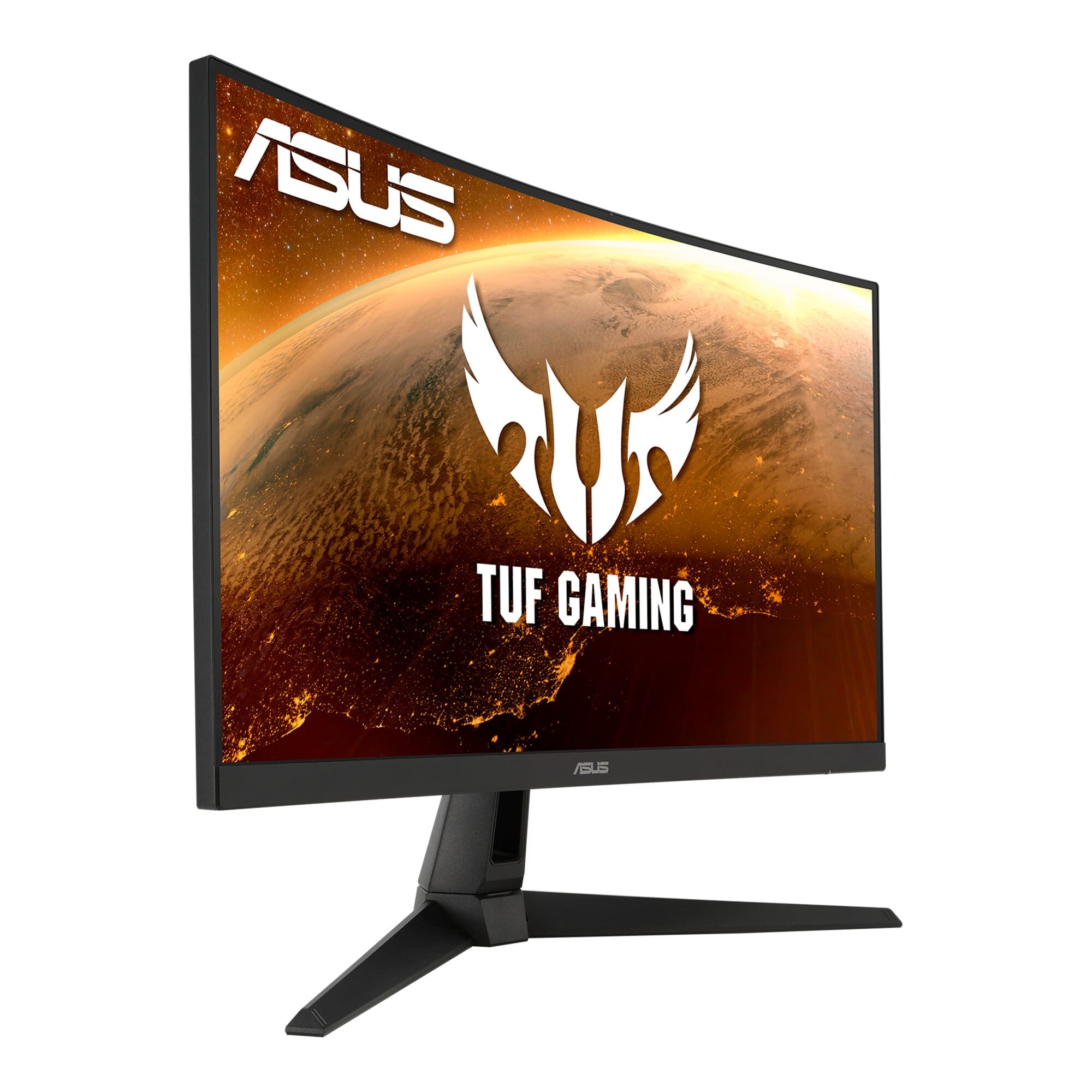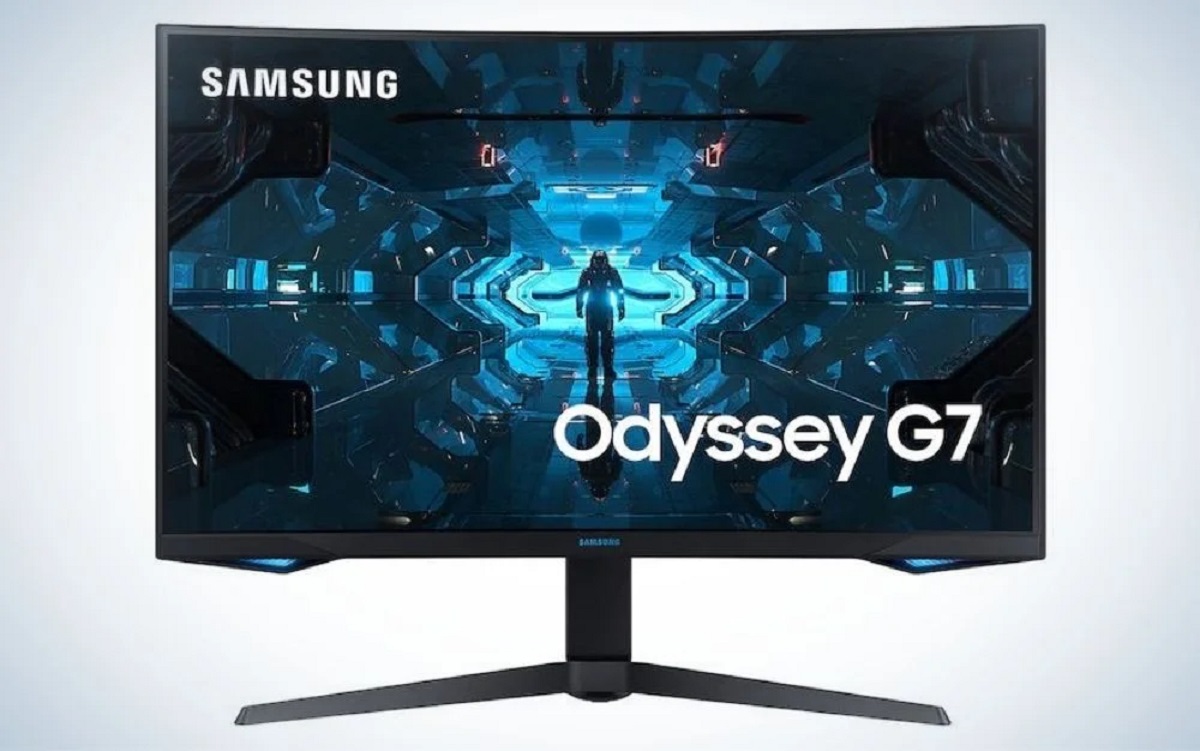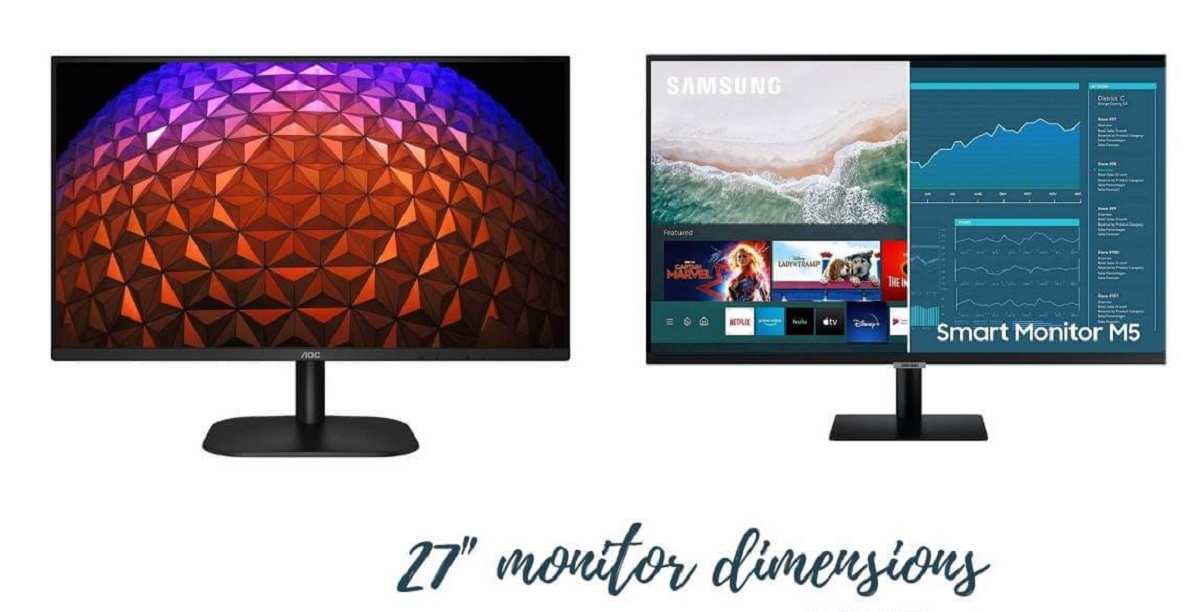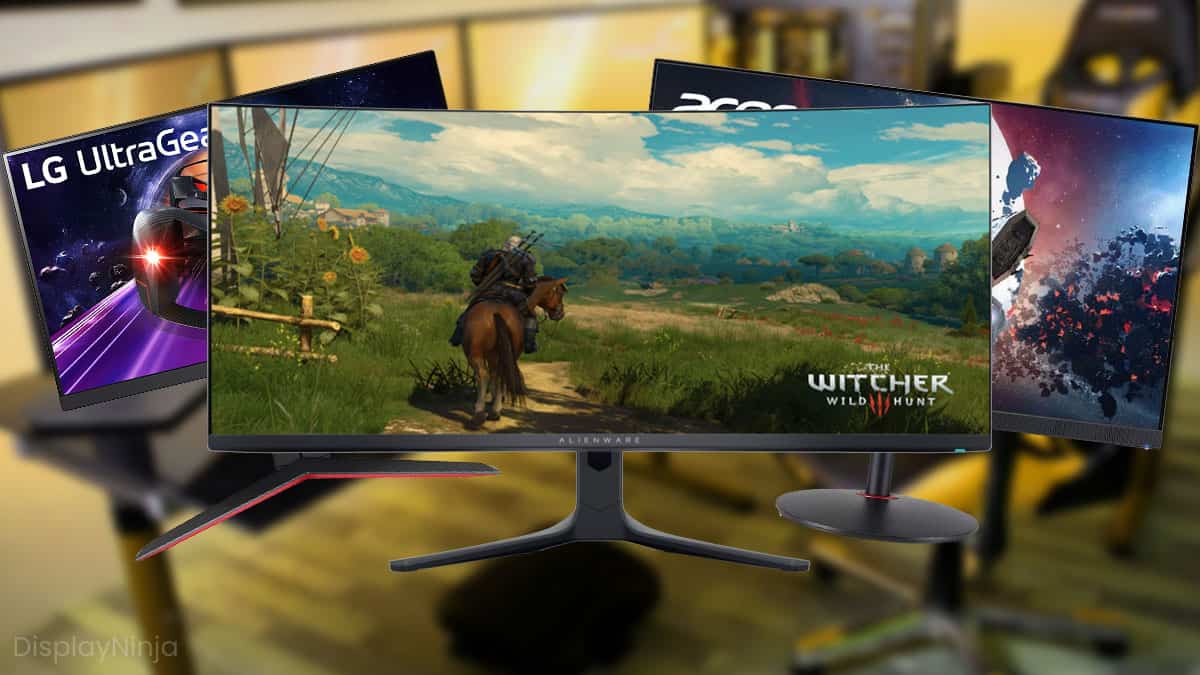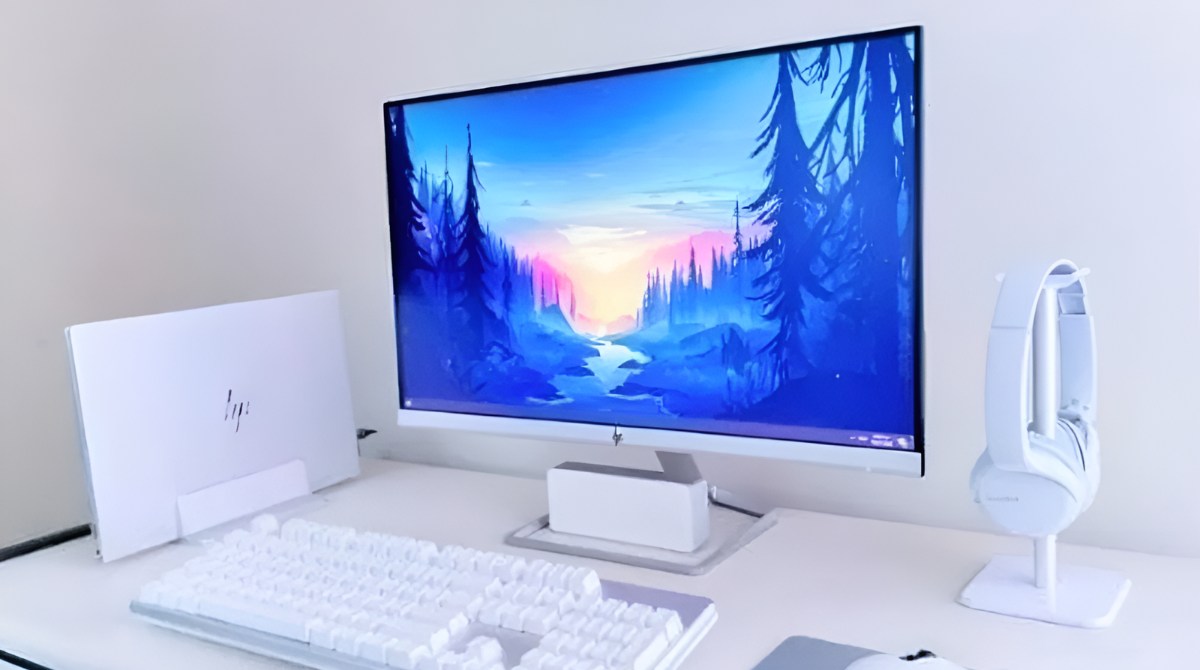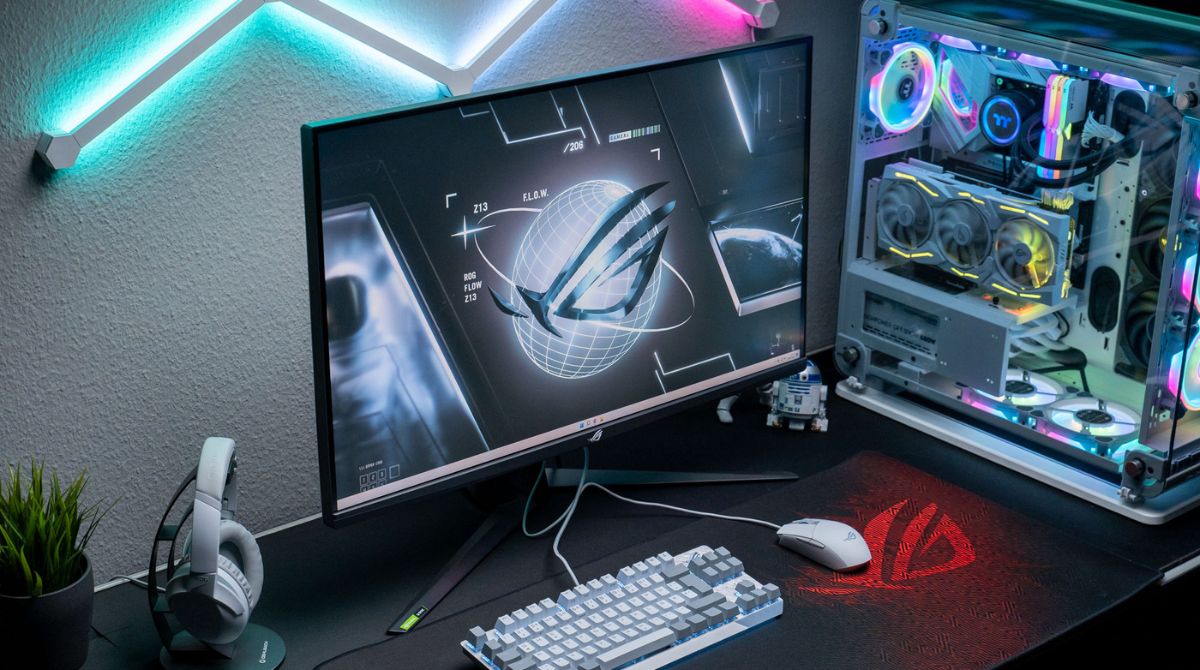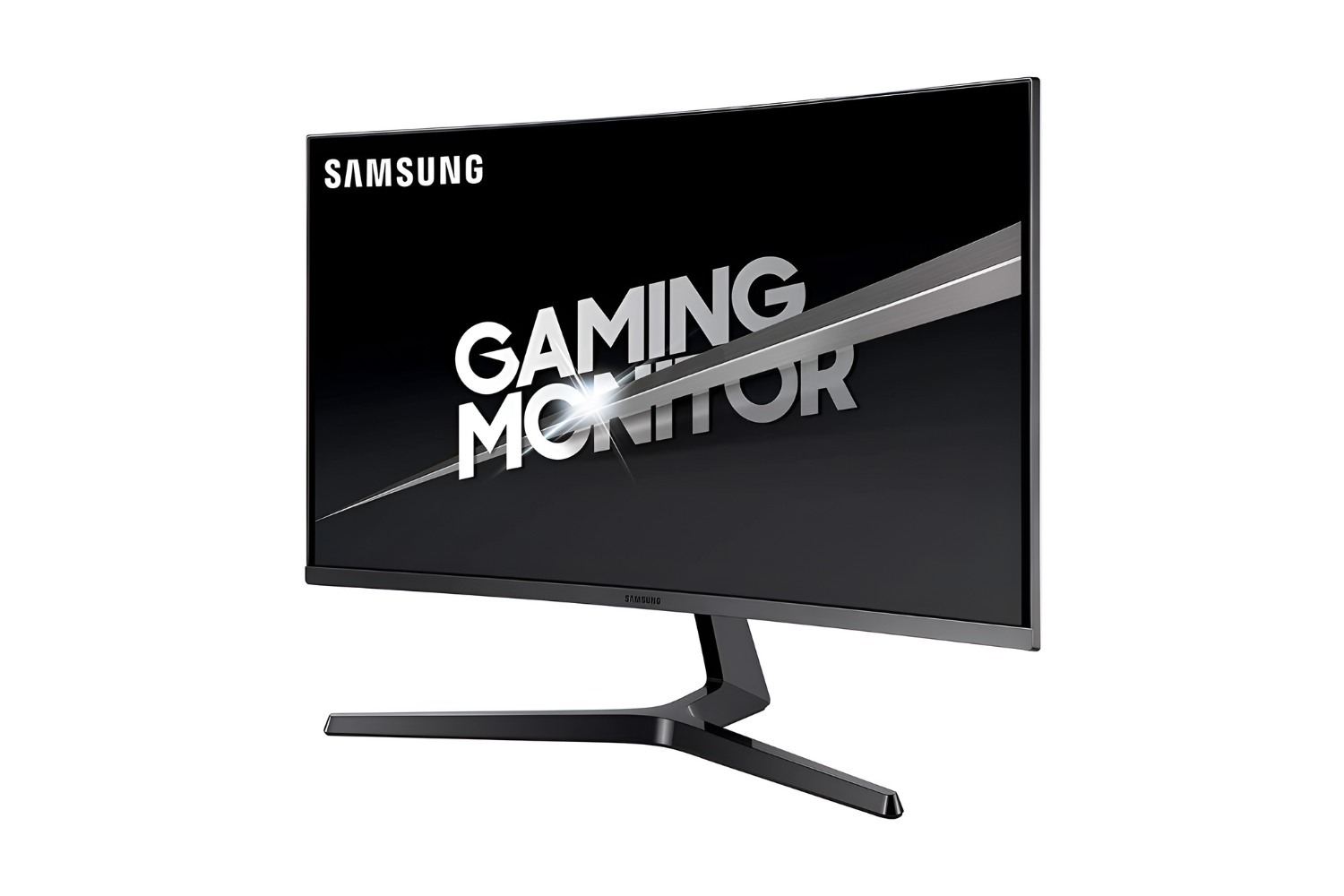Introduction
Gaming has become a popular pastime for many people around the world, and having the right equipment is essential to fully enjoy the immersive experience. When it comes to gaming monitors, size matters. A 27-inch gaming monitor strikes the perfect balance between screen real estate and space efficiency, making it a popular choice among gamers.
However, with so many options available on the market, choosing the right 27-inch gaming monitor can be a daunting task. Factors such as display technology, refresh rate, response time, screen resolution, connectivity options, ergonomics, and additional features all play a crucial role in determining which monitor is best suited for your gaming needs.
In this article, we will delve into the key factors you should consider when looking for a 27-inch gaming monitor. We will discuss popular brands and models, compare different display technologies, explore the importance of refresh rate and response time, analyze screen resolution and aspect ratio options, evaluate connectivity options, consider the ergonomics and adjustability of the monitor, highlight additional features to look for, and finally, discuss price range and value for money.
By the end of this article, you will have a comprehensive understanding of what to look for when choosing a 27-inch gaming monitor and be equipped to make an informed decision that meets your gaming preferences and budget.
Subtitle 1: Key Factors to Consider
When selecting a 27-inch gaming monitor, there are several key factors that you should consider to ensure an optimal gaming experience. These factors include display technology, refresh rate, response time, screen resolution, connectivity options, ergonomics, and additional features.
The display technology plays a vital role in determining the visual quality of the gaming monitor. There are three primary types of display technologies to choose from: Twisted Nematic (TN), In-Plane Switching (IPS), and Vertical Alignment (VA). TN panels offer fast response times and high refresh rates, making them ideal for competitive gaming. IPS panels provide superior color accuracy and wide viewing angles, making them perfect for immersive gaming experiences. VA panels offer high contrast ratios and deep blacks, making them suitable for both gaming and multimedia consumption.
The refresh rate and response time are crucial for smooth and fluid gameplay. A higher refresh rate, usually measured in Hertz (Hz), allows for smoother visuals, reducing motion blur and providing a more responsive feel. Look for monitors with a refresh rate of at least 144Hz for an optimal gaming experience. Additionally, a lower response time in milliseconds (ms) ensures that fast-paced action scenes are displayed without ghosting or motion blur.
The screen resolution and aspect ratio of the gaming monitor are essential for visual clarity and immersion. For sharp details and crisp visuals, consider a monitor with at least a 1440p (QHD) resolution or higher. Additionally, the aspect ratio determines the width and height of the screen. The most common aspect ratio for gaming is 16:9, but ultra-wide monitors with a 21:9 aspect ratio offer an immersive gaming experience with a wider field of view.
Connectivity options are vital for seamless connectivity with your gaming devices and peripherals. Look for monitors with multiple HDMI and DisplayPort inputs to ensure compatibility with your gaming setup. Additionally, USB ports and audio output jacks can be convenient for connecting peripherals and headphones.
Ergonomics and adjustability should not be overlooked, as they greatly affect your comfort during long gaming sessions. Features such as height adjustment, tilt, swivel, and pivot allow you to customize the monitor’s position for optimal viewing angles and reduce strain on your neck and eyes.
Lastly, consider the additional features offered by the gaming monitor. These may include built-in speakers for audio output, HDR (High Dynamic Range) technology for enhanced contrast and colors, and adaptive sync technologies such as AMD FreeSync or NVIDIA G-Sync, which synchronize the display’s refresh rate with the graphics card to eliminate screen tearing and stuttering.
By considering these key factors, you can choose a 27-inch gaming monitor that aligns with your gaming preferences and enhances your gaming experience.
Subtitle 2: Popular Brands and Models
When it comes to 27-inch gaming monitors, there are several popular brands and models that have gained recognition for their performance and features. These brands consistently deliver high-quality monitors designed specifically for gamers.
One well-known brand in the gaming industry is ASUS. Their Republic of Gamers (ROG) series offers a wide range of 27-inch gaming monitors with impressive features. The ASUS ROG Swift PG279QZ, for example, is a popular choice among gamers due to its 1440p resolution, 165Hz refresh rate, and NVIDIA G-Sync support.
Another reputable brand is Acer. Their Predator series is tailored for gaming enthusiasts. The Acer Predator XB273K is a 27-inch gaming monitor that boasts a 4K UHD resolution, 144Hz refresh rate, and NVIDIA G-Sync support. It provides a stunning visual experience and smooth gameplay.
Dell is also known for its high-quality monitors, and their Alienware lineup is well-regarded among gamers. The Alienware AW2720HF is a 27-inch gaming monitor that features a Full HD resolution, a fast 240Hz refresh rate, and AMD FreeSync support. It offers exceptional performance and fluid gameplay.
LG is renowned for its display technologies, and their gaming monitors are no exception. The LG 27GL850-B is a 27-inch gaming monitor that combines a 1440p Nano IPS panel, a 144Hz refresh rate, and NVIDIA G-Sync compatibility. It delivers vivid colors, sharp images, and a smooth gaming experience.
Other notable brands in the gaming monitor market include BenQ, AOC, ViewSonic, and MSI. BenQ offers the EX2780Q, a 27-inch gaming monitor with a 1440p resolution, HDRi technology, and a 144Hz refresh rate. AOC provides the CQ27G1, featuring a curved 27-inch QHD display, a 144Hz refresh rate, and AMD FreeSync support. ViewSonic offers the XG270QG, a 27-inch gaming monitor with a 1440p IPS panel, a 165Hz refresh rate, and NVIDIA G-Sync compatibility. MSI delivers the Optix MAG273R, a 27-inch gaming monitor with a Full HD display, a 144Hz refresh rate, and AMD FreeSync support.
These are just a few examples of popular 27-inch gaming monitor brands and models available in the market. Each brand and model has its own strengths and features tailored for different gaming preferences and budgets. It is essential to research and read reviews to find the one that best suits your needs and provides an immersive gaming experience.
Subtitle 3: Display Technology Comparison
When it comes to gaming monitors, the display technology used plays a significant role in determining the visual quality and performance. Understanding the different display technologies available for 27-inch gaming monitors can help you make an informed decision based on your gaming preferences.
There are three primary display technologies to consider: Twisted Nematic (TN), In-Plane Switching (IPS), and Vertical Alignment (VA).
Twisted Nematic (TN) panels are commonly found in gaming monitors due to their fast response times and high refresh rates. TN panels offer a quick pixel response, which reduces motion blur and provides smooth gameplay. These panels are generally more affordable compared to other display technologies. However, TN panels often suffer from limited color accuracy and poor viewing angles, with colors appearing washed out when viewed from the side.
In-Plane Switching (IPS) panels are known for their superior color accuracy and wide viewing angles. IPS panels offer vibrant colors, making them ideal for rich and immersive gaming experiences. These panels provide consistent image quality even when viewed from extreme angles. However, IPS panels typically have slightly slower response times compared to TN panels, which may result in visible motion blur during fast-paced gaming.
Vertical Alignment (VA) panels strike a balance between TN and IPS panels. VA panels offer high contrast ratios, deep blacks, and good color reproduction. They excel in displaying dark scenes with high detail and offer wide viewing angles similar to IPS panels. However, VA panels may have longer response times, which can cause motion blur or ghosting in fast-moving scenes.
When deciding between these display technologies, it is important to consider your specific gaming needs. If you prioritize fast response times and high refresh rates for competitive gaming, TN panels may be suitable. However, if color accuracy and wide viewing angles are your priority, IPS panels would be a better choice. If you desire deep blacks and high contrast for immersive gaming, VA panels could be the way to go.
It is worth noting that advancements have been made in each display technology. For instance, IPS panels with faster response times (known as IPS gaming panels) have been developed to cater to gamers who demand both accurate colors and smooth gameplay. Similarly, improvements have been made to TN panels to enhance color reproduction and viewing angles.
Ultimately, the display technology you choose depends on your personal preference and the type of games you play. Consider factors such as color accuracy, viewing angles, response times, and budget when selecting a 27-inch gaming monitor with the most suitable display technology for your gaming needs.
Subtitle 4: Refresh Rate and Response Time
The refresh rate and response time are crucial factors to consider when selecting a 27-inch gaming monitor. These specifications greatly affect the smoothness and responsiveness of the gameplay.
The refresh rate refers to the number of times the monitor updates the image on the screen per second and is measured in Hertz (Hz). A higher refresh rate results in smoother motion and reduces motion blur, enhancing the overall gaming experience. Traditionally, monitors have had a refresh rate of 60Hz, but for gaming, a minimum refresh rate of 144Hz is recommended. Monitors with refresh rates of 240Hz are also available for ultra-smooth gaming experiences.
The response time of a monitor refers to how quickly the pixels can change from one color to another. It is measured in milliseconds (ms). A lower response time ensures that fast-moving scenes and transitions are rendered with minimal motion blur or ghosting. A response time of 1ms or 2ms is ideal for gaming, as it provides a smooth and clear image during fast-paced action. However, keep in mind that response times advertised by manufacturers may not always reflect real-world performance.
It is important to note that the refresh rate and response time work together to provide a seamless gaming experience. A higher refresh rate is more beneficial when the response time is low, as this ensures that fast-paced actions are displayed without any blurring or trailing effects. Conversely, a lower refresh rate paired with a high response time can result in perceived motion blur during quick movements.
Another factor to consider in relation to refresh rate is the adaptive sync technology. Adaptive sync technologies, such as AMD FreeSync and NVIDIA G-Sync, help to eliminate screen tearing and stuttering by synchronizing the monitor’s refresh rate with the graphics card’s frame rate output. This technology ensures a smoother and more tear-free gaming experience.
When selecting a 27-inch gaming monitor, it is recommended to choose a model with a high refresh rate and low response time for an optimized gaming experience. However, keep in mind that the performance of these specifications can vary between different monitor models and manufacturers. It is advisable to read reviews and gather insights from fellow gamers to ensure that the monitor you choose provides the desired smoothness and responsiveness for your gaming needs.
Subtitle 5: Screen Resolution and Aspect Ratio
The screen resolution and aspect ratio are important considerations when choosing a 27-inch gaming monitor, as they directly impact the clarity and visual immersion of the gaming experience.
Screen resolution refers to the number of pixels displayed on the screen horizontally and vertically. A higher resolution provides sharper and more detailed visuals. For a 27-inch gaming monitor, a minimum resolution of 1440p, also known as Quad HD (QHD), is recommended to ensure a crisp display. Some gamers may opt for a 4K UHD resolution (3840 x 2160 pixels) for even more outstanding visuals, especially if they have a high-end graphics card to support it.
Aspect ratio is the ratio of the width to the height of the screen. The most common aspect ratio for gaming monitors is 16:9, which is the standard widescreen format. This aspect ratio is suitable for most games and offers a balanced view of the gameplay. However, an increasing number of gamers are opting for ultra-wide monitors with a 21:9 aspect ratio. These monitors provide an immersive gaming experience by expanding the horizontal field of view, allowing for a wider perspective and increased detail on the sides.
When choosing a screen resolution and aspect ratio, it is essential to consider the capabilities of your graphics card and the types of games you typically play. Higher resolutions require more powerful graphics processing units (GPUs) to maintain smooth frame rates. If you have a mid-range or entry-level graphics card, it may be more practical to opt for a 1440p resolution rather than 4K UHD to ensure adequate performance.
Additionally, consider the aspect ratio that aligns with your gaming preferences. The wider field of view provided by an ultra-wide monitor may enhance the immersion in certain games, particularly those with expansive landscapes or intense racing simulations. However, keep in mind that not all games support ultra-wide aspect ratios, and some may require third-party solutions to enable proper compatibility.
Ultimately, choosing the right combination of screen resolution and aspect ratio depends on personal preference and the types of games you enjoy playing. Consider your budget, graphics card capabilities, and the compatibility of your favorite games when selecting the ideal 27-inch gaming monitor to enhance your gaming experience.
Subtitle 6: Connectivity Options
When choosing a 27-inch gaming monitor, it is important to consider the available connectivity options to ensure seamless compatibility with your gaming setup. Having the right connections can enhance your gaming experience and allow for easy connection to various devices and peripherals.
The most common connectivity options for gaming monitors are HDMI (High-Definition Multimedia Interface) and DisplayPort. HDMI is widely supported and allows for transmitting high-definition audio and video signals from your gaming console, computer, or other devices to the monitor. Look for a monitor that offers multiple HDMI ports, as this can enable you to connect multiple devices simultaneously without the need for frequent switching or unplugging.
DisplayPort is another popular connection option, known for its high bandwidth and ability to support higher resolutions and refresh rates. Many graphics cards and gaming PCs are equipped with DisplayPort outputs, making it a reliable choice for gaming monitors. If you have a high-performance gaming setup or plan to utilize a monitor with a higher refresh rate or resolution, make sure it supports DisplayPort.
In addition to HDMI and DisplayPort, some gaming monitors may also have other connectivity options such as DVI (Digital Visual Interface) or VGA (Video Graphics Array) ports. While these older connection standards are becoming less common, they can still be useful for connecting older devices or secondary displays.
When assessing connectivity options, it is also worth considering the availability of additional ports such as USB ports and audio jacks. USB ports can be handy for connecting gaming accessories, charging devices, or transferring data. Audio jacks allow you to connect headphones or external speakers directly to the monitor, eliminating the need for separate audio connections.
Another feature to consider is a built-in USB hub. This allows you to connect multiple USB devices directly to the monitor, reducing cable clutter and providing easy access to peripherals such as keyboards, mice, or game controllers.
When choosing a 27-inch gaming monitor, ensure that it offers the necessary connectivity options to meet your specific gaming needs. Consider the devices you plan to connect, the types of ports they require, and the convenience of having additional features like USB ports or audio jacks. Having the right connectivity options can make it easier to set up your gaming station and ensure a smooth and hassle-free gaming experience.
Subtitle 7: Ergonomics and Adjustability
When investing in a 27-inch gaming monitor, it is important to consider the ergonomics and adjustability features to ensure optimal comfort and reduce the risk of discomfort or fatigue during long gaming sessions.
Ergonomics refers to the study of designing equipment and systems that are safe, comfortable, and efficient to use. In the context of gaming monitors, this means considering factors such as the monitor’s height, tilt, swivel, and pivot capabilities.
An adjustable height feature is crucial for finding the most comfortable viewing position. Ideally, the monitor should be positioned at eye level to reduce strain on the neck and promote better posture. Look for a monitor with a height-adjustable stand or VESA mount compatibility, which allows you to raise or lower the monitor to fit your preferred height.
Tilting capability enables you to adjust the vertical angle of the monitor. Being able to tilt the screen backward or forward helps minimize reflections and glare, especially if you have a light source behind you or if you’re gaming in a brightly lit environment. Look for a monitor with a tilting range that suits your needs.
Swivel functionality allows you to rotate the monitor horizontally. This feature can be useful when collaborating with others or when you need to adjust the screen without moving the entire monitor. Some gaming monitors also offer a pivot feature, allowing you to rotate the display from landscape to portrait mode for content creation or reading.
In addition to these ergonomic features, consider the bezel width of the monitor. A thin bezel design provides a more immersive and seamless multi-monitor setup, as the gap between screens is minimized.
Another aspect to consider is cable management. Built-in cable management features, such as clips or holes in the stand, help keep the cables organized and prevent them from cluttering your desk space. This promotes a cleaner and more organized gaming setup.
When selecting a 27-inch gaming monitor, prioritize ergonomics and adjustability features that align with your specific needs and preferences. Customizing the monitor’s position according to your comfort can significantly enhance your gaming experience and prevent discomfort or long-term health issues associated with poor ergonomics.
Subtitle 8: Additional Features to Look For
When searching for a 27-inch gaming monitor, it is worth considering additional features that can enhance your gaming experience and provide added convenience. These features can vary between different models and brands, so it is important to identify the ones that align with your specific needs and preferences.
One additional feature to consider is the inclusion of built-in speakers. While dedicated gaming headsets are popular among gamers, having built-in speakers can be convenient for casual gaming or when you don’t want to wear headphones. Look for monitors with integrated speakers that provide decent audio quality to enhance your gaming experience.
High Dynamic Range (HDR) technology is another feature to look for in a gaming monitor. HDR improves contrast, color accuracy, and overall image quality by providing a wider range of colors and improved brightness levels. This results in more vibrant and realistic visuals, enhancing the gaming experience, particularly in games that support HDR technology.
One essential feature for competitive gamers is a low input lag. Input lag refers to the delay between pressing a button on your input device (e.g., keyboard, mouse, controller) and the action being displayed on the monitor. Look for monitors with a low input lag specification to ensure fast and responsive gameplay, minimizing any delay between your actions and what you see on the screen.
Some gaming monitors also incorporate blue light filters or flicker-free technology to reduce eye strain. Prolonged exposure to blue light emitted by screens can cause eye fatigue and disrupted sleep patterns. These features help minimize the negative effects of blue light, making long gaming sessions more comfortable and reducing the strain on your eyes.
Adaptive sync technologies, such as AMD FreeSync and NVIDIA G-Sync, are important features to consider if you experience screen tearing or stuttering during gameplay. These technologies synchronize the monitor’s refresh rate with the graphics card’s frame rate output, resulting in smoother, tear-free gaming experiences.
Lastly, consider the availability and placement of the monitor’s control buttons or on-screen display (OSD). Conveniently placed buttons or an intuitive OSD menu can make it easier to adjust settings such as brightness, contrast, and color accuracy on the fly, without the need for external software or complicated menus.
Take into account your specific gaming preferences and budget when evaluating additional features. Prioritize the features that are most important to your gaming experience, such as audio quality, HDR support, low input lag, eye strain reduction, adaptive sync, and ease of adjustment.
Subtitle 9: Price Range and Value for Money
When it comes to purchasing a 27-inch gaming monitor, price range is an important factor to consider. Gaming monitors can vary greatly in terms of price, and it’s essential to find a balance between your budget and the features you desire.
In general, the price of a gaming monitor is influenced by factors such as display technology, screen resolution, refresh rate, response time, additional features, and the reputation of the brand. Monitors with higher resolutions, faster refresh rates, and advanced features tend to be more expensive.
It’s important to identify your specific gaming needs and prioritize the features that matter most to you. Consider the types of games you play, the graphics card capabilities, and the level of performance you expect from your monitor. If you are a competitive gamer, you may want to invest in a monitor with a high refresh rate and low response time. If you prioritize visual fidelity, a higher resolution and HDR support may be crucial.
While it’s tempting to opt for the most expensive monitor on the market, it’s not always necessary to spend a fortune to get a quality gaming experience. Many mid-range monitors offer excellent performance and features at a more affordable price point. Research and read reviews to find monitors that offer the best value for money in terms of performance, durability, and customer satisfaction.
In addition, keep an eye out for any promotions, discounts, or seasonal sales that may help you save money on your purchase. It’s also beneficial to periodically check for new releases or model updates, as older models may become more affordable when newer versions hit the market.
It’s worth noting that a higher price tag does not always guarantee the best gaming experience. There are several fantastic gaming monitors available at various price points, and it’s essential to weigh the features and performance against the price to find the best value for your money.
Ultimately, it’s important to set a realistic budget and compare different options within that range. Consider the features that are essential to your gaming experience and determine the most suitable balance between price and performance. By doing so, you can find a 27-inch gaming monitor that provides excellent value for money and meets your gaming needs and budget constraints.
Subtitle 10: Final Thoughts and Recommendations
Choosing the right 27-inch gaming monitor is a crucial decision for any gamer looking to enhance their gaming experience. By considering key factors such as display technology, refresh rate, response time, screen resolution, connectivity options, ergonomics, and additional features, you can make an informed decision that aligns with your gaming preferences and budget.
When it comes to display technology, consider whether you prioritize fast response times (TN panels), superior color accuracy (IPS panels), or deep blacks and high contrast (VA panels). Remember that advancements have been made within each technology, so research specific models for thorough comparisons.
For smooth and fluid gameplay, prioritize monitors with a high refresh rate and low response time. Adaptive sync technologies like AMD FreeSync and NVIDIA G-Sync can further enhance your gaming experience by eliminating screen tearing and stuttering.
Screen resolution and aspect ratio are important for visual clarity and immersion. Consider a minimum resolution of 1440p (QHD) and decide on the aspect ratio that works best for your preferred games and level of immersion.
Connectivity options such as HDMI, DisplayPort, USB, and audio jacks are crucial to ensure seamless compatibility with your gaming setup. Additionally, pay attention to ergonomics and adjustability features such as height, tilt, swivel, and pivot capabilities to optimize comfort during long gaming sessions.
Don’t overlook additional features like built-in speakers, HDR support, low input lag, blue light filters, and cable management, as they can enhance convenience and the overall gaming experience.
Remember to consider your budget and prioritize features that matter most for your gaming preferences. By doing thorough research, reading reviews, and comparing pricing and performance, you can find a 27-inch gaming monitor that offers excellent value for your money.
Ultimately, the final choice will depend on your specific needs and preferences. Consider the type of games you play, the graphics card capabilities, and the level of performance you desire. By keeping these factors in mind and making an informed decision, you’ll be well on your way to finding the perfect 27-inch gaming monitor to take your gaming experiences to new heights.







